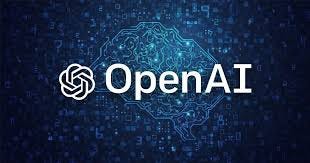Getting Started with the OpenAI API in Python: A Step-by-Step Guide
 Allan Smith Musasizi
Allan Smith MusasiziArtificial Intelligence (AI) has rapidly become an essential tool for various applications, from generating creative content to automating tasks. One powerful AI tool is the OpenAI API, which provides access to cutting-edge language models like GPT-4, GPT-4o and others. In this blog, I’ll walk you through how to use the OpenAI API to build intelligent applications.

What Is the OpenAI API?
The OpenAI API is a cloud-based service that allows developers to integrate OpenAI’s language models into their own applications. You can use it to perform a wide range of tasks, such as:
Text generation: Creating content, summaries, or product descriptions.
Chatbots: Building conversational AI for customer support
Code assistance: Auto-generating code or providing explanations for code snippets.
Data analysis: Extracting insights from unstructured text data.
By the end of this guide, you’ll be ready to make your first API call and start building your AI-powered application basically with python!
Step 1: Sign Up for an OpenAI Account
Visit OpenAI’s website and sign up for an account.
Once registered, go to the API settings page, where you’ll find your API key.
Note: Keep your API key secure and private, as it provides access to your OpenAI account.
Step 2: Install Required Libraries
You can interact with the OpenAI API using various programming languages, but I’ll focus on Python for this guide. Make sure you have Python installed, then install the openai package:
Note: Python 3.6 and above are fully compatible with OpenAI’s
openailibrary, so even the latest stable versions like Python 3.10, 3.11, and the 3.12 should work without issues.
pip install openai
Step 3: Setting Up Your File
Create a new Python file, for example, main.py. Import the openai library and set up your API key:
import openai
openai.api_key = "your-api-key-here"
Replace "your-api-key-here" with your actual API key.
Step 4: Making Your First API Call
Let’s start with a basic example to generate text using the API. We’ll create a function that generates a response based on a given prompt.
Example 1: Text Generation
def generate_text(prompt):
messages = [
{"role": "user", "content": prompt}
]
response = openai.chat.completions.create(
model="gpt-4o", # Use the appropriate model or engine (GPT-3.5 or GPT-4)
messages=messages,
)
return response.choices[0].message.content.strip()
# Test the function
prompt = "Write a short story about a robot learning to cook."
generated_text = generate_text(prompt)
print(generated_text)
Explanation
messages = [{"role": "user", "content": prompt}]: This line creates a list calledmessages, which contains a single dictionary. This dictionary represents the user's input:"role": "user"specifies that this message comes from the user."content": promptassigns the content of the message to thepromptprovided when calling the function.model: Specifies the model to use (eg.text-davinci-003for GPT-3.5 orgpt-4ofor GPT-4o).prompt: The input text that the model will respond to.return response.choices[0].message.content.strip(): This line extracts the content of the generated response from the API's output:Run the script ,
python main.py runserverin the terminal and you should see the OpenAI API generate a short story based on the prompt!
Example 2: Building a Chatbot with OpenAI API
Next, let’s build a simple chatbot that can carry on a conversation using the ChatCompletion endpoint, which is ideal for handling dialogues.
def chat_with_openai(messages):
try:
response = openai.chat.completions.create(
model="gpt-4o", # Use the appropriate model
messages=messages,
)
return response.choices[0].message.content.strip()
except Exception as e:
print(f"An error occurred: {e}")
return None
def main():
# Initialize conversation
messages = [{"role": "system", "content": "You are a helpful assistant."}]
print("Welcome to the OpenAI Chat! Type 'exit' to quit.")
while True:
user_input = input("You: ")
if user_input.lower() == 'exit':
print("Goodbye!")
break
# Add user input to messages
messages.append({"role": "user", "content": user_input})
# Get response from OpenAI
reply = chat_with_openai(messages)
if reply:
print("AI:", reply)
# Add assistant's response to messages
messages.append({"role": "assistant", "content": reply})
if __name__ == "__main__":
main()
Explanation;w
Function: chat_with_openai
Purpose: Communicates with the OpenAI API to get a response based on the conversation history.
API Call:
response = openai.chat.completions.create(...)sends the messages to the API.Return Value:
return response.choices[0].message.content.strip()retrieves and returns the assistant's response, removing any extra spaces.Error Handling: The
try-exceptblock manages any errors that occur during the API call.
Function: main
Purpose: Handles user interaction and maintains the conversation flow.
Initialization:
messages = [{"role": "system", "content": "You are a helpful assistant."}]starts the conversation with a context-setting message.User Input Loop: The
while True:loop continually prompts the user for input until they type "exit".Adding Messages:
messages.append({"role": "user", "content": user_input})adds the user's input to the conversation history.Getting AI Response:
reply = chat_with_openai(messages)calls the function to get a response from the AI.Exiting: If the user inputs “exit,” the loop breaks, and a goodbye message is displayed.
Entry Point Check
if __name__ == "__main__":: This line ensures that themain()function runs only when the script is executed directly, not when imported as a module.
This code sets up a simple interactive chat interface using the OpenAI API. The chat_with_openai function handles communication with the AI, while the main function manages user input and conversation flow. Together, they allow users to engage with the AI seamlessly in a terminal environment, making it easy to ask questions and receive intelligent responses.
Cost and Rate Limits
Using the OpenAI API incurs costs based on the model and number of tokens used. Regularly monitor your usage via the OpenAI dashboard to avoid exceeding your budget.
Conclusion
The OpenAI API is a powerful tool for integrating AI capabilities into your applications, whether you’re building a chatbot, generating creative content, or automating code-related tasks. With the steps outlined above, you’re well on your way to harnessing the power of OpenAI for your projects!
Subscribe to my newsletter
Read articles from Allan Smith Musasizi directly inside your inbox. Subscribe to the newsletter, and don't miss out.
Written by
